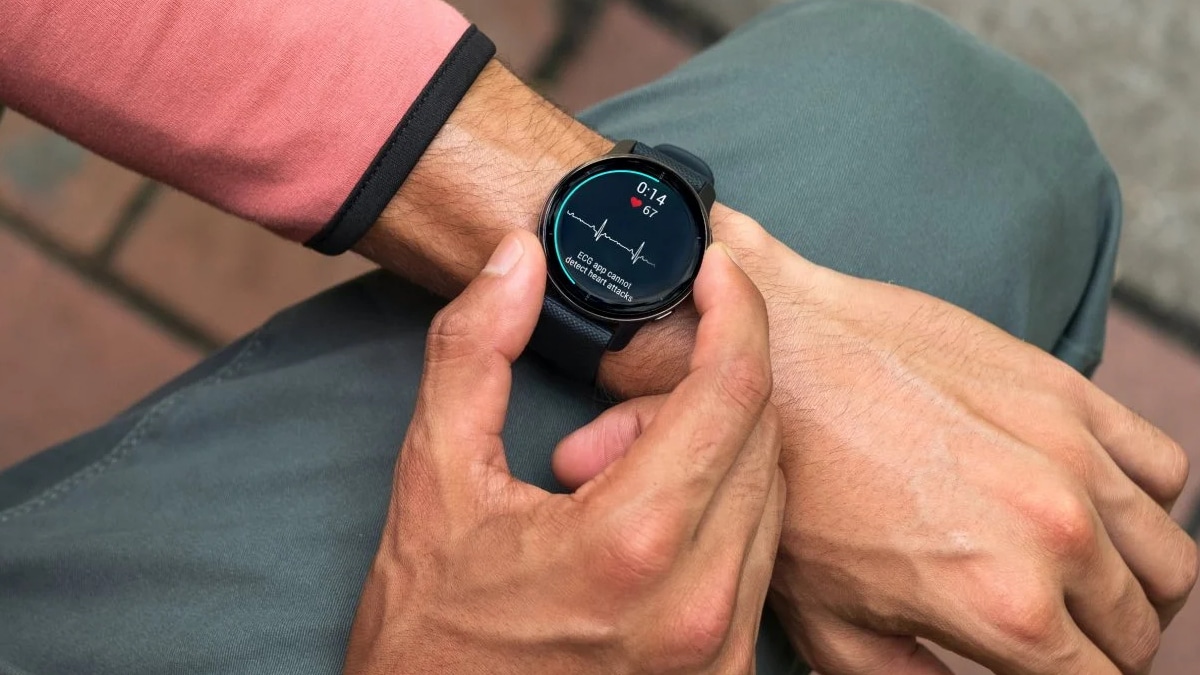
A new study claims that wearable devices such as smartwatches can be used to detect those at higher risk of developing heart failure and irregular heart rhythms in later life.
The peer-reviewed study, published in The European Heart Journal – Digital Health, looked at data from 83,000 people who underwent comparable 15-second electrocardiograms (ECGs) to the kind carried out using smartwatch and phone devices.
The researchers identified ECG recordings containing extra heartbeats, which are usually benign, but if they occur frequently, are associated with conditions such as heart failure and arrhythmias (irregular heartbeat).
They found that people with an extra beat in this short recording (one out of 25 in total) had twice the risk of developing heart failure or an irregular heart rhythm (atrial fibrillation) over the next 10 years.
ECG recordings were analyzed from people aged 50 to 70 who had no known heart disease at the time.
Heart failure is a condition in which the heart pump becomes weak. It often cannot be treated. Atrial fibrillation occurs when abnormal electrical impulses suddenly start firing in the heart’s top chambers (atria), causing an irregular and often abnormally fast heart rate. It can be life-limiting, causing problems including dizziness, shortness of breath and fatigue, and is associated with a fivefold increased risk of stroke.
Lead author Dr Michele Orini (UCL Institute of Cardiovascular Science) said: “Our study shows that ECGs from consumer-grade wearable devices could help detect and prevent heart disease in the future.
“The next step is to test how screening people using wearables might work best in practice.
“Such screening could potentially be combined with the use of artificial intelligence and other computer tools to quickly identify ECGs indicating high risk, as we did in our study, thereby increasing risk in a population.” more accurate assessment and help reduce the burden.” of these diseases. ,
Senior author Professor Pier D. Lambius (UCL Institute of Cardiovascular Science and Bart’s Heart Centre, Bart’s NHS Health Trust) said: “Being able to identify people at risk of heart failure and arrhythmias at an early stage means we can can assess high-risk cases more effectively and help prevent cases by starting treatment early and providing lifestyle advice about the importance of regular, moderate exercise and diet.”
In an ECG, sensors attached to the skin are used to detect the electrical signals generated by the heart with each beat. In clinical settings, at least 10 sensors are placed around the body and the recordings are viewed by a specialist doctor to see if there are signs of a potential problem. Consumer-grade wearable devices rely on two sensors (single-lead) embedded in a single device and are less cumbersome as a result but may be less accurate.
For the new paper, the research team used machine learning and an automated computer tool to identify recordings with extra beats. These extra beats were classified as either premature ventricular contractions (PVCs), coming from the lower chambers of the heart, or premature atrial contractions (PACs), coming from the upper chambers.
Recordings identified as extra beats, and some recordings that were not judged as extra beats, were then reviewed by two experts to ensure that the classification was correct.
The researchers first looked at data from 54,016 participants from the UK Biobank project, with an average age of 58, whose health was tracked for an average of 11.5 years after their ECGs were recorded. They then looked at a second group of 29,324 participants, with an average age of 64, who were followed for 3.5 years.
After adjusting for potential confounding factors such as age and medication use, the researchers found that one extra beat coming from the heart’s lower chambers was associated with a twofold increase in subsequent heart failure, while those from the top chambers (atria) an extra beat from was associated with a twofold increase in cases of atrial fibrillation.
The study involved researchers from the UCL Institute of Cardiovascular Science, the MRC Unit for Lifelong Health and Aging at UCL, Bart’s Heart Center (Bart’s Health NHS Trust) and Queen Mary University of London. It was supported by the Medical Research Council and the British Heart Foundation, as well as the NIHR Barts Biomedical Research Centre.